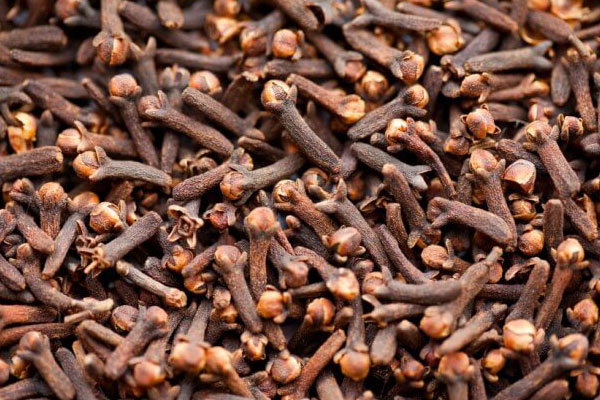Introduction
Clove (Eugenia caryophyllus)
Family Myrtaceae
Clove of commerce is the dried, fully grown but still unopened flower buds of the evergreen tree Eugenia caryophyllus of the family Myrtaceae. Clove oil obtained by the distillation of flower buds, inflorescence branches left after the buds have been removed, and the leaves is the other product of commercial value. It is a colourless or slightly yellowish liquid, becoming darker with age and exposure to the light. The clove tree is a medium sized symmetrically shaped tree with smooth grey bark. Fully grown trees are usually 15 - 20m tall.
Cultivation
Agronomic Requirements for cultivation

Clove grows well in a humid tropical climate from sea level up to an elevation of about 1,000m. An average rainfall of 1,750 - 2,500mm. per annum is sufficient for the crop. It is however, necessary that dry periods alternate with moist ones for good flowering. Nevertheless, the crop cannot stand prolonged drought. In Sri Lanka, although clove is cultivated mostly in the mid-country, the potential for its cultivation in the wet low-country plains is considerable. The annual average temperature should be 20° - 30°C without much seasonal and diurnal variations. Clove thrives well in a variety of soils. Deep and rich loams with high humus content are best suited for the crop. Clove does not tolerate water logging and therefore land selected for this crop should be well drained.
Field Planting and Spacing
Clove is propagated through seeds and no special varieties have been identified. Seeds must be germinated and planted in Polythene Bags. Cloves are usually spaced 6.0 m x 7.25 m. The selected 15 to 20 months old seedlings may be planted in the beginning of the rainy season. Shade is essential during the first two or three years of growth. Thereafter full exposure to light is beneficial.
Manuring
For proper field establishment and higher yields, it is essential that the plants are fertilized adequately from the time they are planted in the field. The following fertilizer mixture and rates are currently recommended.

